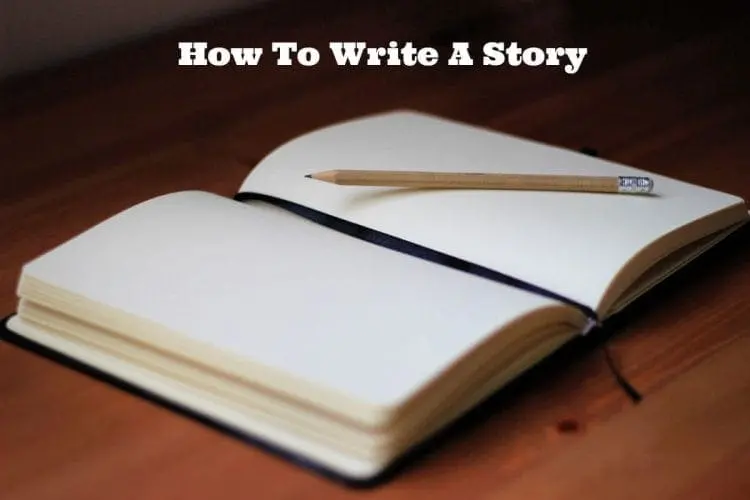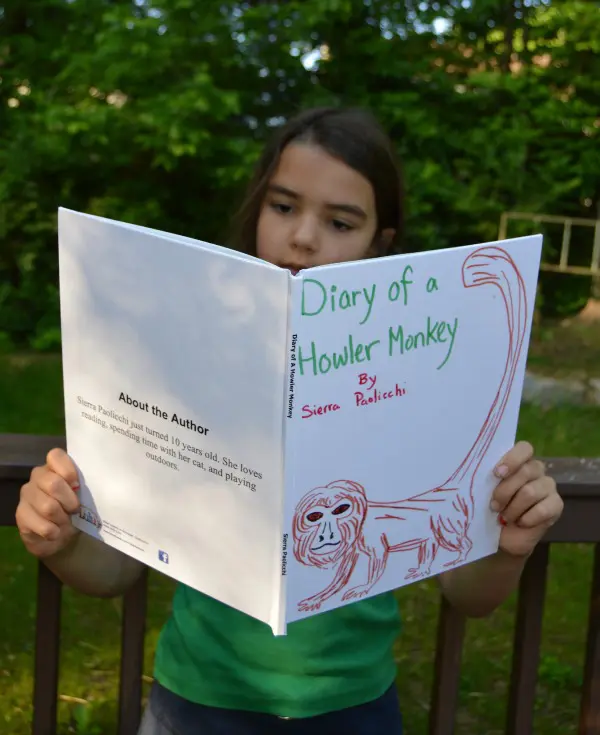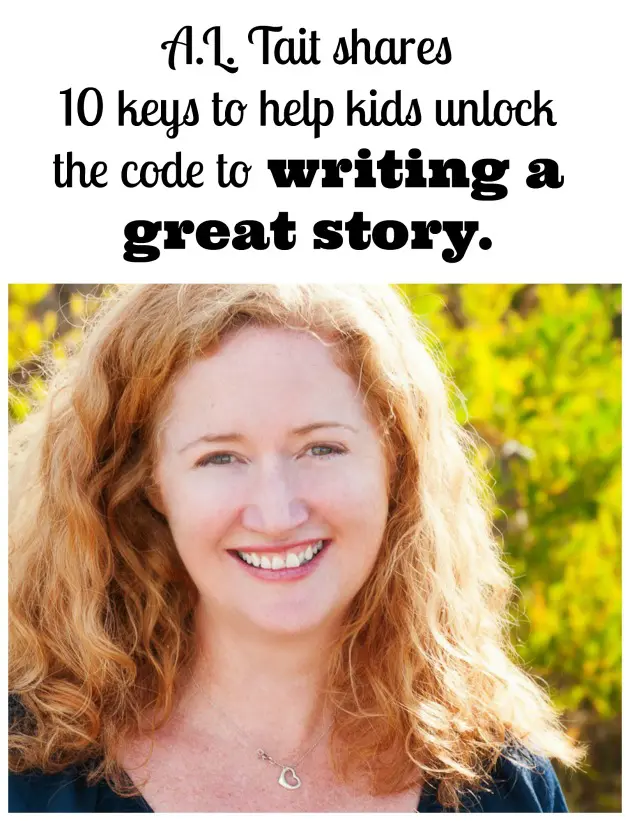Both of my young children love to read. That is why I surprised to learn that my daughter doesn’t enjoy her Language Arts classes. When I asked why not, she said it was because she has to write and she doesn’t like writing. I was astonished and said of course she liked writing. She insisted otherwise. I realized that as many books as we have read together, we haven’t written any short stories together. It is no wonder writing feels foreign to her. That is why I am so pleased today to welcome A.L. Tait, the author of The Mapmaker Chronicles (affiliate link) to share ten ideas on how to write a story. Not only does she inspire young readers, she also inspires young writers. Story writing for kids is a fun activity for kids as well as a valuable learning exercise.
Making Story Writing For Kids Fun
A.L. Tait is an Australian author of children’s fiction and her series, The Mapmaker Chronicles, is has just been published in the US in June 2017 by Kane/Miller Books. It is an adventure fantasy trilogy aimed at kids 9 and up, about a race to map the world – and a boy who really doesn’t want to go. You can read more about the series and more about A.L. Tait at allisontait.com. She is a great resource of inspiration and knowledge on writing children’s books. I am happy to have her share with us 10 pointers on how to write a great story. I think you will find these very useful in helping young children learn to enjoy short story writing for kids and I just know you love reading the stories and books they write!
By A.L. Tait
One of the joys of being a children’s author is the opportunity to visit school classrooms and talk to kids about writing. I LOVE talking about writing. It’s my second-favourite thing to do (after actually writing…).
My aim with workshops at primary schools is not just to inform, but to inspire. So many kids think that writing is something that other people are good at. They don’t realise that those amazing imaginations that they have are the foundation of any good story.
I think that when you start out with writing stories it can feel like a mysterious process, particularly if it’s not something you love. So I’ve come up with 10 keys to help kids unlock the code to writing a great story.
I hope they’ll help your child to embrace their own special writing voice as they tell their original story.
10 Ideas On How To Write A Story

Key 1: Ideas are everywhere
One of the things that a lot of kids struggle with is finding an idea for a story. They think that writers are special people who have ideas drop on them from out of the sky – and I really wish this were true in real life, because it would make my job easier.
The truth is that story ideas and creative writing prompts are all around us, and writers have just trained themselves to see them. I encourage kids to watch and listen to see if they can spot their own stories. To give them an insight into how it works, I tell them the story of how The Mapmaker Chronicles series came to be.
The whole epic adventure series came from two conversations I had with my oldest son, then nine years old. One night we were standing outside on a hot summer’s night staring out into space. “How far does space go?” he asked me, to which I had to answer that nobody knows. That so far we haven’t found the edges.
The next night we were reading a Horrible Histories book about explorers. “How did they map the world, mum?” he asked. This one I could answer: they had to go. As I was explaining how they had to get into their ships and sail out into the unknown, I had a moment of mum inspiration.
“They would have felt exactly the same way we feel when we stare out into space,” I added. “They didn’t know where they edges were.”
And in that moment, the writer in me took over and I had an idea for a race to map the world – and a boy who really doesn’t want to go…
So The Mapmaker Chronicles series began its life with a feeling and a question.
Key 2: Start with the three Ps
Once you have an idea, the next problem kids often face is just where to start. I always tell them the first step to begin with one of the three Ps:
• person
• place
• problem
In the case of The Mapmaker Chronicles, I started with the problem: how did they map the world? But almost at the same time, I had Quinn, my 14-year-old hero, who is, on paper, the least likely person to find himself on a grand adventure.
I find that kids often find it easiest to start writing once they have a main character in mind. Why? Because your character drives the story. Everything in a story is about how your character reacts to situations.
A great place can also be a fun beginning of the story and help to create a story plan in a wonderful way.
Key 3: Create a character
When creating a character, it’s easiest to begin with an idea of what your character looks like. If kids are struggling with that, I suggest that they simply think of someone they know – or better still a combination of two people they know – and base their character description on that. (I always remind them that it’s best if the person they know doesn’t actually recognise themselves!)
Once they have a physical description, they can start to think about how this might impact on the person. For example, a small person moves through the world very differently to a big one.
I get kids to think about their character’s family set-up, their interests, and their friends as a great way to get a feeling for who they really. This helps a favorite character be described in much detail. After all, little details add a lot to character development and make for a captivating story.
Key 4: Understand your character’s goal
What does your character want? This is one of the biggest questions for creating a story structure. Your character has to want something, even if it’s just to get through another day at school!
When people talk about the plot of a story, they’re simply talking about the series of events – large and small – that happen in the story. But that series of events happens because your PERSON is trying to solve his or her PROBLEM. He or she wants something, and the story is about what happens when he or she tries to reach that goal – usually with lots of problems along the way, just to keep things interesting.
Or, you could put it like this…

Key 5: The story formula
PERSON + GOAL + PROBLEM = STORY
This is a very simple overview of a story, and kids love it. This simple formula will help them develop their creative writing story outline. If I was to break down book one of The Mapmaker Chronicles (Race To The End Of The World) it looks like this:
Quinn + wants to be home + has to make the map for the king = STORY
Key 6: Have a plan
While I know a lot of keen young writers who like to get an idea and just start writing (and, frankly, I’m a little bit this way myself), I also find that a lot of young writers then never get to the end of the story.
Every story needs a framework, even if it’s as simple as ‘This is the beginning, this is the middle, this is the end’ or even just starting with the story formula above. I always recommend that kids have an idea of important events and what that ending might be before they even begin writing.
Key 7: Get your characters talking
Dialogue is an integral part of great story writing. It’s one of the best ways to ‘show’ what’s happening in a story, rather than simply telling the reader every detail. I give kids two pieces of advice when I comes to dialogue:
• Give your characters their best lines – by this, I mean that written conversation is different to spoken conversation. In a story, we don’t need all the ‘hi, how are you’ stuff before we get to the important bit of the conversation ‘did you hear Jenny is missing?’.
• Remember we don’t all talk the same – this is another place where listening is an important part of writing. I encourage kids to listen closely to how people talk to each other. For instance, their teacher uses different language to the other kids in their classroom.
Key 8: Make sure you finish your story
As the mother of a keen writer, I know just how hard it can sometimes be for kids to finish a story. Often they’ll make their story so complicated that they’d need a long time and 50,000 words to resolve it.
So my first tip for finishing is to keep your story as simple as possible. Have a look at how many characters you’ve introduced and ask yourself if you need them all. Look at how many problems your heroine has and ask if maybe you could just concentrate on school problems, instead of home, ballet class and boy problems as well.
My second tip is to ask yourself a question: have you started your story in the right place?
One young friend of mine was struggling with writing 2000 words for a school assignment. His difficulty was that he’d written 2000 words but he hadn’t even got to the important bit.
My advice to him: start your story at the important bit.
Always begin your story on the day that is different.
A happy ending is one where they finish the story writing process with all the story elements in place.
Key 9: Read your story out loud
When I finish the draft of a new book, the first thing I do is to read the entire thing out loud to one or the other of my two boys. They are 13 and 10 now, and still happy to listen, letting me know where the boring bits are (so that I can take them out).
I encourage kids to do this with their stories as well. If you read them out loud, you can hear where the sentences don’t sound right or where your might need extra information.
Key 10: Editing
Teachers cheer when I mention the word ‘editing’ in workshops – and kids roll their eyes. But the truth is that, as every published author knows, the only way to make sure that your story is the best that it can be is to go over it, edit it, rewrite it where you need to. The first draft is a great accomplishment but the whole story will need a bit or reworking to end up with a high quality, interesting story.
Any kid who goes through this list of ideas on how to write a story at least once is well on the way to improving writing skills and becoming a better writer!
Conclusion
I hope you find these keys to story writing for kids helpful to get reluctant writers to enjoy writing and storytelling. It can be a fun project for your family day to each write a story and read them to each other! Don’t be afraid to help brainstorm and create a story for kids. First ask, what’s the theme or idea you have in mind? Is there a particular setting, characters, or message you’d like to include in the story? Then just start building a fun and engaging story for kids! The more you do the story writing process, the easier it becomes.
A.L. Tait is the author of The Mapmaker Chronicles, an epic middle-grade adventure series for boys and girls, out now with Kane Miller. You can find out more about the series on her website.
Happy writing!
Related Posts:
Journal Ideas: How to Fill the Pages


Angela Roberts says
This was a very informative piece. The boys are writing a lot now in the fourth grade and I’m impressed with their creative writing abilities. This will help me help them. (and myself too).
A.L. Tait says
Thanks for your comment Angela – I’m so glad you found the post useful!
Mark Danenhauer says
These suggestions seem so simple, but they are great. I especially like the importance of keeping the story simple so that they can actually finish it. My daughter loves starting stories and creating the characters, but usually runs out of steam before the finish.
A.L. Tait says
Hi Mark, that is the case with so many kids! They have so many ideas all the time! I encourage them to save some of their brilliant thoughts for the next story. 🙂